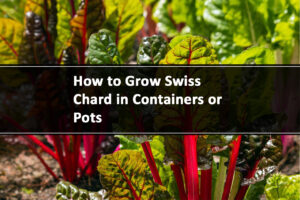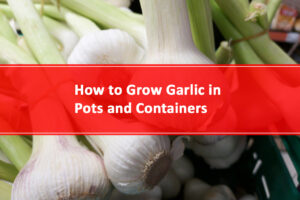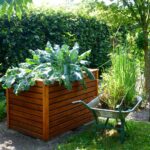Beautiful Plants For Your Interior
Everything you need to know about vertical gardening

What is Vertical Gardening and Why You Should Try It?
Vertical gardening is a popular and innovative technique that allows individuals to maximize their gardening space by utilizing vertical surfaces. Whether you have limited space in your backyard, a small balcony, or even an urban apartment, vertical gardening offers a practical solution to grow plants and beautify your living space.
Join us as we explore all there is to know about vertical gardening, including its advantages, appropriate plants, design suggestions, and crucial advice for effective implementation.
Benefits of Vertical Gardening
Vertical gardening offers numerous advantages that make it an attractive option for both seasoned gardeners and beginners. Firstly, vertical gardens take up minimal space, making them ideal for small yards, balconies, or even indoors. By growing upwards instead of outwards, you can utilize walls, fences, or trellises to maximize your planting area.
Vertical gardens also enhance aesthetics, adding a unique and eye-catching feature to any space. Additionally, these gardens help reduce the risk of pests and diseases, as proper airflow and sun exposure discourage the spread of plant-related issues.
Also, vertical gardening allows easy access to plants, minimizing the need to bend or stoop during maintenance and harvesting. Lastly, this technique allows for better utilization of water resources, as vertical gardens typically require less water due to efficient irrigation systems.
Types of Vertical Gardening
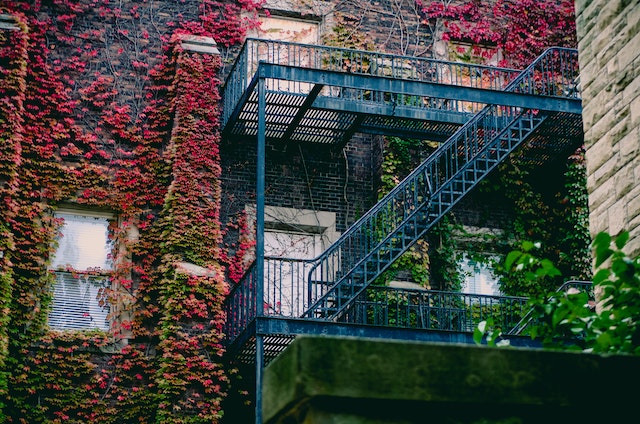
There are several types of vertical gardening that you can explore based on your space, preferences, and plant choices. Here are some common types:
a) Living Walls or Green Walls: Living walls are vertical structures covered with a variety of plants. They can be created both indoors and outdoors, adding beauty and improving air quality. Living walls are often constructed using a modular system with pockets or trays that hold the plants and provide proper irrigation.
b) Vertical Pallet Gardens: Vertical pallet gardens involve repurposing wooden pallets as planters. The slats of the pallet serve as a support system for attaching plant pots. This cost-effective option is popular for small spaces and provides a rustic aesthetic.
c) Tower Gardens: Tower gardens are vertical structures that consist of stacked planters or pots. They allow you to grow multiple plants in a small footprint, making them suitable for balconies, patios, or limited garden spaces.
d) Hanging Baskets and Wall-Mounted Planters: Hanging baskets and wall-mounted planters are simple and versatile options for vertical gardening. They can be hung from ceilings, walls, or fences, creating a cascading effect and adding visual interest to any space.
e) Trellis Systems and Espalier: Trellis systems involve installing a framework against a wall or fence to support climbing plants. This allows the plants to grow vertically, providing a beautiful display and maximizing space. Espalier is a specific technique where plants are trained and pruned to grow flat against a wall or trellis in specific patterns.
f) Vertical Hydroponics and Aeroponics: Vertical hydroponic and aeroponic systems are soilless gardening methods. Plants are grown in nutrient-rich water solutions or misting environments, allowing for efficient water usage and optimal plant growth. These systems are popular for indoor gardening and limited-space applications.
g) Modular Vertical Gardens: Modular vertical gardens consist of individual modules or panels that can be arranged and combined in various configurations. These systems offer flexibility in design and can be easily installed or relocated as needed.
h) Pocket Planters: Pocket planters are fabric or felt pockets attached to a vertical surface. These pockets provide individual planting spaces for different plants, allowing for a diverse and visually appealing vertical garden.
How do Vertical Gardens Help The Environment

Vertical gardens offer several environmental benefits, making them an eco-friendly gardening option. Here’s how vertical gardens help the environment:
a) Improved Air Quality: Vertical gardens contribute to cleaner air by acting as natural air filters. Plants absorb carbon dioxide and release oxygen through photosynthesis, helping to reduce air pollution and increase oxygen levels. They also trap airborne pollutants, such as dust and volatile organic compounds (VOCs), effectively purifying the air.
b) Urban Heat Island Mitigation: Vertical gardens help mitigate the urban heat island effect. In urban areas, concrete and asphalt absorb and radiate heat, leading to higher temperatures. Vertical gardens on buildings or walls help cool the surrounding environment through evapotranspiration, shading, and reducing heat absorption. They create a microclimate that counteracts the heat island effect, making urban areas more comfortable and reducing the need for excessive air conditioning.
c) Stormwater Management: Vertical gardens aid in stormwater management by reducing runoff and promoting water absorption. Plants capture rainwater, reducing the amount of water that flows into storm drains. This helps prevent flooding and decreases the strain on drainage systems. Additionally, vertical gardens can be designed with integrated rainwater harvesting systems, allowing collected water to be reused for irrigation.
d) Biodiversity Support: Vertical gardens provide habitats for birds, insects, and other small creatures, contributing to urban biodiversity. They attract pollinators, such as bees and butterflies, helping to support local ecosystems. By creating green spaces in urban environments, vertical gardens offer refuge and food sources for wildlife, which may have otherwise been lost due to urbanization.
e) Noise Reduction: Vertical gardens act as natural sound barriers, helping to reduce noise pollution in urban areas. The plants absorb and scatter sound waves, minimizing the impact of traffic noise, construction sounds, and other disturbances. This can create a more peaceful and serene environment for residents and workers.
f) Conservation of Space and Resources: Vertical gardens allow individuals to maximize their gardening potential in limited spaces. By utilizing vertical surfaces, such as walls or fences, vertical gardens make efficient use of available space, especially in urban environments. They reduce the need for expansive traditional gardens, preserving land resources for other purposes.
g) Aesthetic and Psychological Benefits: Vertical gardens enhance the visual appeal of buildings, streetscapes, and public spaces. The presence of greenery has been shown to have positive psychological effects, promoting relaxation, reducing stress, and improving overall well-being. Vertical gardens contribute to a more vibrant and livable environment for individuals and communities.
Suitable Plants for Vertical Gardens

The correct plants must be chosen for “vertical gardening” to be successful. Due to their growth patterns and adaptability, certain plants do best to grow vertically. Here are a few well-liked options:
a) Vining Plants: Vines such as tomatoes, cucumbers, beans, and grapes naturally climb and thrive in vertical gardens. These plants can be trained to grow upwards and provide a bountiful harvest.
b) Herbs and Leafy Greens: Herbs like basil, mint, and thyme, along with leafy greens such as lettuce, spinach, and kale, are well-suited for vertical gardens. Their shallow root systems and compact growth make them perfect candidates for vertical planters.
c) Flowers: Add a splash of color to your vertical garden with flowering plants like petunias, pansies, or nasturtiums. These plants not only look beautiful but also attract pollinators, enhancing the overall health of your garden.
d) Succulents: If you’re looking for low-maintenance plants, succulents like sedums, echeverias, and crassulas are excellent choices. Their ability to store water in their leaves makes them tolerant to drought conditions.
e) Climbing Roses: Vertical gardens can create a stunning backdrop for climbing roses, adding elegance and fragrance to your space. Choose varieties that are known for their climbing habits and provide adequate support for these plants.
When choosing plants for your vertical garden, keep things like sunlight needs, moisture levels, and available space in mind. You may create a successful garden by selecting the right plant species.
Design Ideas for Vertical Gardens
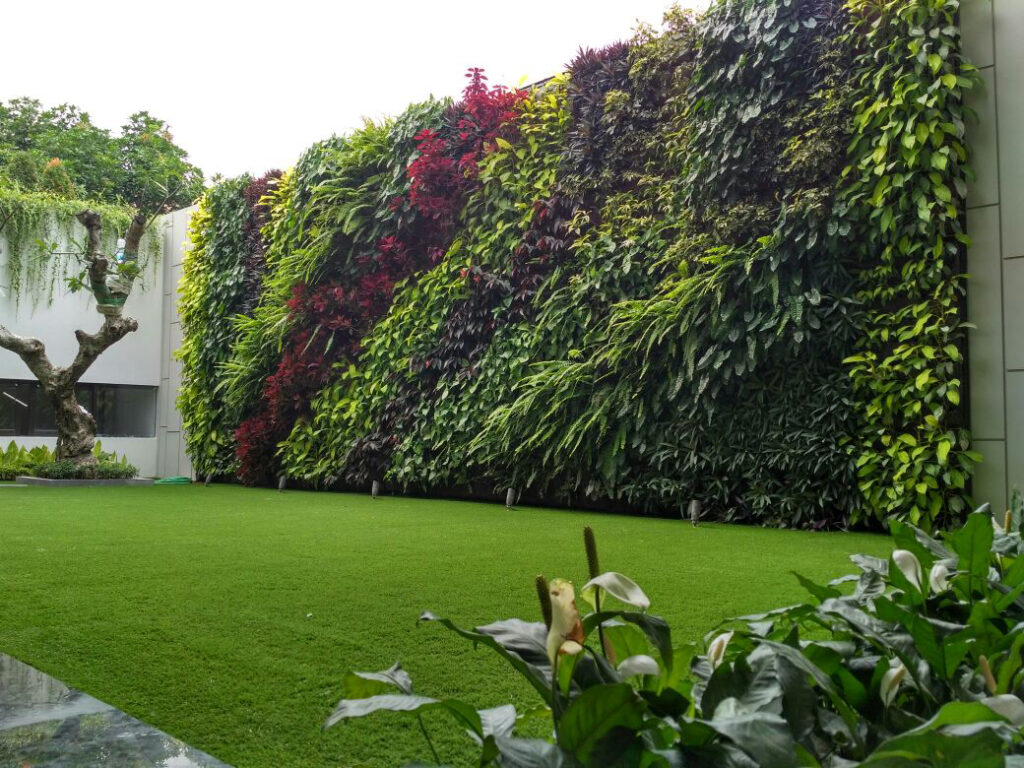
The chance to let your creativity run wild while designing your vertical garden is amazing. You may use a variety of design concepts to turn your vertical area into an aesthetically pleasing and useful garden. Here are a few ideas:
a) Living Walls: Create a living wall by covering an entire vertical surface with a variety of plants. This technique can be implemented indoors or outdoors and serves as an impressive focal point.
b) Pallet Gardens: Repurpose wooden pallets by transforming them into vertical planters. Attach plant pots to the pallet’s slats, allowing plants to grow vertically. Pallet gardens are budget-friendly and perfect for small spaces.
c) Tower Gardens: Stack multiple planters or pots on top of each other to form a tower garden. This design optimizes space and allows you to grow a variety of plants in a compact area.
d) Hanging Baskets: Hang baskets or containers from walls, ceilings, or fences to create a cascading effect. This design adds depth to your vertical garden and offers a unique display of plants.
e) Trellis Systems: Install trellises against walls or fences to support climbing plants. This design not only provides structural support but also adds height and vertical interest to your garden.
f) Vertical Hydroponics: Incorporate hydroponic systems into your vertical garden for a soil-free and water-efficient approach. This technique is ideal for indoor gardening and ensures optimal plant growth.
Always consider the weight-bearing capacity of your chosen vertical structure and plan accordingly. Experiment with different design ideas to find the one that best suits your space and personal style.
Important Tips for Successful Vertical Gardening

To ensure the success of your vertical garden, it’s important to keep these essential tips in mind:
a) Adequate Sunlight: Most plants require ample sunlight to thrive. Before setting up your vertical garden, assess the available sunlight in the chosen location. Ensure that your plants receive the recommended hours of sunlight each day. If sunlight is limited, consider selecting shade-tolerant plants.
b) Proper Irrigation: Effective irrigation is crucial for vertical gardens. Install a reliable watering system that provides consistent moisture to your plants. Drip irrigation or self-watering systems are popular choices for vertical gardens, as they deliver water directly to the plant roots, minimizing water wastage.
c) Soil Considerations: Choose a well-draining soil mix for your vertical garden. Soil that retains too much moisture can lead to root rot and other plant health issues. Consider using lightweight and nutrient-rich soil mixes specifically formulated for vertical gardening.
d) Structural Stability: Ensure that your vertical garden structure is sturdy and can support the weight of the plants, soil, and containers. Use appropriate fasteners and supports to secure the structure to the wall or fence. Regularly inspect the integrity of the structure to prevent any accidents.
e) Regular Maintenance: Like any garden, vertical gardens require regular maintenance. Monitor your plants for pests, diseases, and nutrient deficiencies. Prune and trim plants as needed to encourage healthy growth. Regularly check and adjust the irrigation system to ensure optimal watering.
f) Vertical Garden Rotation: Rotate your plants periodically to ensure balanced sunlight exposure and prevent overcrowding. This will promote healthier growth and minimize competition among plants.
Maintaining Your Vertical Garden

Maintaining your vertical garden is key to its long-term success. Here are some maintenance tasks to keep in mind:
a) Watering: Check soil moisture regularly and adjust the watering schedule as needed. Be mindful not to overwater or underwater your plants.
b) Fertilizing: Supplement the nutrient requirements of your plants with a suitable fertilizer. Choose organic or slow-release fertilizers to provide a steady supply of nutrients over time.
c) Pruning and Training: Regularly prune your plants to remove dead or damaged foliage and encourage proper growth. Train vining plants to grow along the designated support structures.
d) Pest and Disease Control: Monitor your plants for signs of pests or diseases. Take appropriate measures to control and prevent infestations, such as using organic pest control methods or introducing beneficial insects.
e) Weeding: Remove any weeds that may compete with your plants for resources. Regularly inspect your vertical garden and promptly remove any unwanted vegetation.
Common Mistakes to Avoid in Vertical Gardening

While vertical gardening offers numerous benefits, it’s important to be aware of common mistakes that can hinder your garden’s success. Avoid these pitfalls to ensure optimal results:
a) Insufficient Planning: Lack of proper planning can lead to overcrowding, poor sunlight exposure, and inadequate support for plants. Plan your vertical garden layout carefully, considering plant selection, space requirements, and structural stability.
b) Neglecting Proper Drainage: Inadequate drainage can lead to waterlogged soil and root rot. Ensure that your vertical garden has proper drainage mechanisms in place to prevent water accumulation.
c) Overwatering or Underwatering: Finding the right balance in watering is crucial for plant health. Avoid overwatering, which can suffocate roots, as well as underwatering, which can cause plant stress and stunted growth.
d) Ignoring Plant Selection: Not all plants are suitable for vertical gardening. Choose plants that are well-adapted to vertical growth and can thrive in your specific environmental conditions.
e) Lack of Maintenance: Neglecting regular maintenance tasks can result in poor plant health and reduced productivity. Dedicate time to pruning, training, fertilizing, and pest control to keep your vertical garden flourishing.
f) Using Unsuitable Support Structures: Ensure that the support structures you choose can handle the weight and growth habits of your selected plants. Weak or inadequate supports can lead to plant damage or even structural failure.
Vertical Gardening Techniques for Small Spaces

Vertical gardening is particularly beneficial for those with limited space. Here are some techniques specifically designed for small spaces:
a) Vertical Pockets: Utilize hanging pockets made of felt or fabric to create a vertical garden. These pockets can be hung on walls or fences, providing space for multiple plants while minimizing the footprint.
b) Hanging Planters: Hang lightweight planters from hooks or brackets to maximize vertical space. This technique works well for trailing or cascading plants, adding depth and visual interest to your small space.
c) Tiered Shelving: Use tiered shelving units to create a vertical garden. Arrange plants on each level, starting with taller plants at the back and gradually decreasing in height towards the front. This technique optimizes space while allowing each plant to receive adequate sunlight.
d) Window Boxes: Install window boxes on the exterior of windows or balcony railings. These shallow containers are perfect for growing herbs, flowers, or compact vegetables. They not only beautify your small space but also provide easy access to fresh produce.
e) Vertical Herb Garden: Plant herbs in individual pots or containers and hang them vertically on a trellis or wall-mounted structure. This technique allows you to grow a variety of herbs while conserving space and adding a delightful aroma to your surroundings.
DIY Vertical Garden Projects
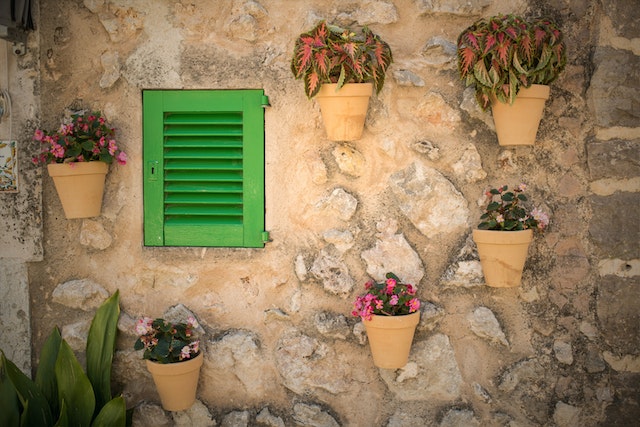
Creating a DIY vertical garden is a rewarding and cost-effective way to personalize your gardening space. Here are a few project ideas to inspire your creativity:
a) Pallet Herb Garden: Repurpose a wooden pallet by attaching herb pots to the slats. Mount the pallet vertically against a wall or fence to create a charming herb garden.
b) PVC Pipe Tower: Cut PVC pipes into varying lengths and stack them vertically, securing them with adhesive or zip ties. Plant flowers or herbs in the pipe openings to create a visually striking tower garden.
c) Hanging Gutter Garden: Attach sections of gutters horizontally to a wall or fence. Fill them with soil and plant your favorite herbs, greens, or strawberries. The gutter garden not only saves space but also provides excellent drainage.
d) Shoe Organizer Planters: Hang a shoe organizer with pockets on a wall or fence and fill each pocket with soil. Plant herbs, succulents, or small flowers for a unique and space-saving vertical garden.
e) Vertical Pallet Planter: Attach planter boxes to a pallet and lean it against a wall or fence. Fill the planters with a variety of flowers, herbs, or trailing vines for a rustic and vibrant vertical garden display.
Vertical Gardening Tools and Supplies

To set up and maintain your vertical garden, you’ll need a few essential tools and supplies:
a) Containers or Planters: Choose containers or planters suitable for vertical gardening, such as pocket planters, hanging baskets, or wall-mounted pots.
b) Support Structures: Depending on your design, you’ll need trellises, stakes, brackets, or hooks to provide support for your plants.
c) Soil Mix: Select a lightweight and well-draining soil mix suitable for vertical gardening. Look for mixes formulated specifically for container or raised bed gardening.
d) Watering System: Install an irrigation system such as a drip irrigation kit or self-watering containers to ensure consistent and efficient watering.
e) Pruning Tools: Keep pruning shears, scissors, or small hand pruners handy for regular maintenance and trimming.
f) Fertilizer: Choose a suitable fertilizer, either organic or slow-release, to provide essential nutrients for your plants.
g) Protective Gear: Wear gloves, goggles, and appropriate clothing to protect yourself while working with plants and gardening tools.
People also ask
-
Is vertical gardening only suitable for outdoor spaces?
Vertical gardening can be adapted to both outdoor and indoor spaces. It’s a versatile technique that allows you to grow plants on walls, fences, balconies, or even inside your home. The key is to choose suitable plants, provide adequate light, and ensure proper irrigation.
-
How much sunlight do vertical gardens need?
The sunlight requirements will vary depending on the plant species you choose. Most plants thrive with at least 6 hours of direct sunlight per day. However, there are shade-tolerant plants that can adapt to lower light conditions. Assess the available sunlight in your space and select plants accordingly.
-
Do vertical gardens require a lot of maintenance?
Like any garden, vertical gardens do require regular maintenance. Tasks include watering, fertilizing, pruning, pest control, and general upkeep. However, proper planning, efficient irrigation systems, and plant selection can minimize maintenance needs.
-
Can I grow vegetables in a vertical garden?
Yes, vertical gardens are excellent for growing vegetables. Many vegetables, such as tomatoes, peppers, lettuce, and herbs, adapt well to vertical growth. Choose compact varieties and provide adequate support to ensure healthy growth and maximize your vegetable harvest.
-
How do I water a vertical garden effectively?
Efficient watering is crucial for vertical gardens. Installing a drip irrigation system or using self-watering containers can ensure consistent and efficient water delivery directly to the plant roots. Regularly check the moisture levels and adjust watering accordingly to avoid overwatering or underwatering.
-
Can I use recycled materials for building a vertical garden?
Yes, using recycled materials is a great way to create a sustainable vertical garden. Materials like pallets, old gutters, shoe organizers, or repurposed containers can be transformed into functional and attractive vertical planters. Just make sure they are structurally sound and safe for planting.
-
Are there any limitations to vertical gardening?
While vertical gardening offers many advantages, it’s important to consider a few limitations. Factors such as the weight capacity of the structure, available sunlight, and plant selection need to be considered. Additionally, certain plants with extensive root systems or heavy fruiting may not be suitable for vertical gardens.
-
Can I start a vertical garden indoors?
Absolutely! Indoor vertical gardens are becoming increasingly popular, especially for those with limited outdoor space. Choose plants that thrive in indoor conditions, provide adequate lighting (natural or artificial), and ensure proper ventilation for the plants.
-
How do I prevent pests in a vertical garden?
Regular monitoring, proper sanitation, and implementing organic pest control methods can help prevent pest infestations in your vertical garden. Techniques such as companion planting, introducing beneficial insects, or using natural remedies can keep pests at bay.
-
Can I grow a vertical garden without soil?
Yes, vertical gardens can be created without soil using hydroponic or aeroponic systems. These systems use nutrient-rich water solutions or misting techniques to provide plants with the necessary nutrients. It’s a space-saving and water-efficient alternative to traditional soil-based gardening.
Wrap up On Vertical Gardening
Vertical gardening is a versatile and innovative solution for maximizing your gardening space. By utilizing vertical surfaces, you can grow a wide variety of plants, regardless of your available space limitations. With proper planning, plant selection, and maintenance, you can create a beautiful and productive vertical garden that adds a touch of greenery to your living space. Experiment with different designs, techniques, and DIY projects to unleash your creativity and enjoy the rewards of a thriving vertical garden. As per the U.S Department Of Agriculture Vertical Farming – No Longer A Futuristic Concept


